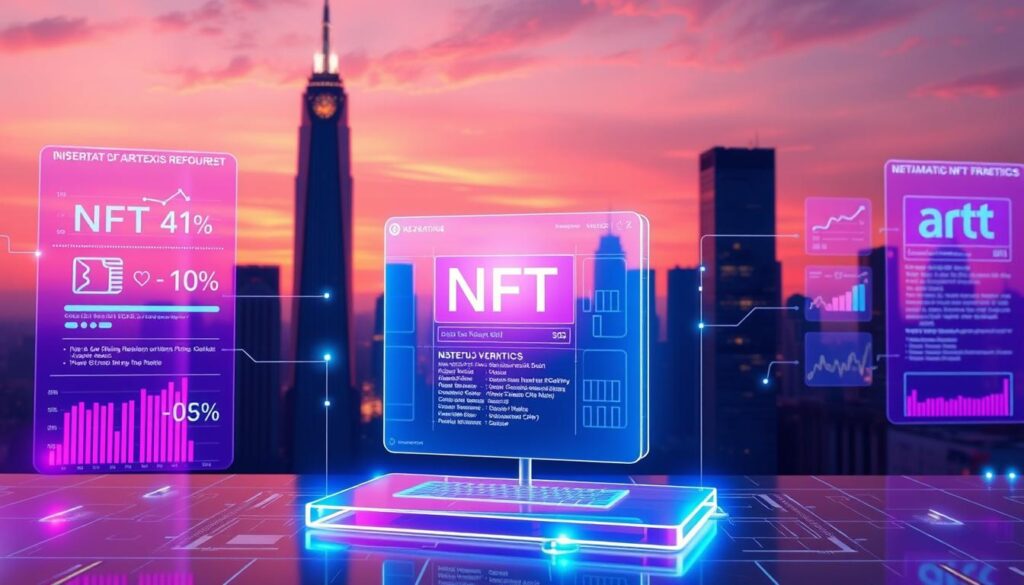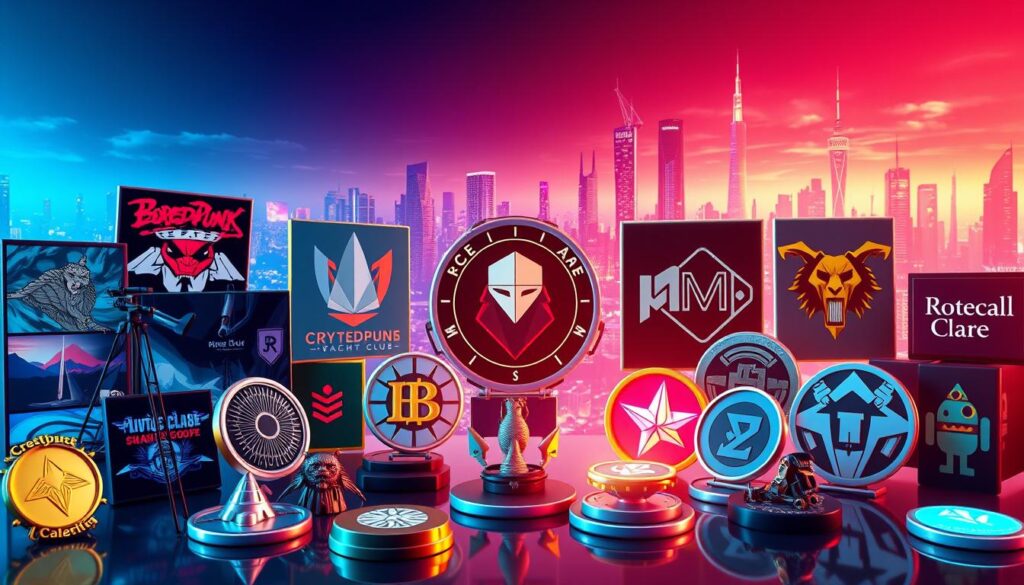Now Reading: Most Profitable NFT Collections to Invest in Today
- 01
Most Profitable NFT Collections to Invest in Today
Most Profitable NFT Collections to Invest in Today
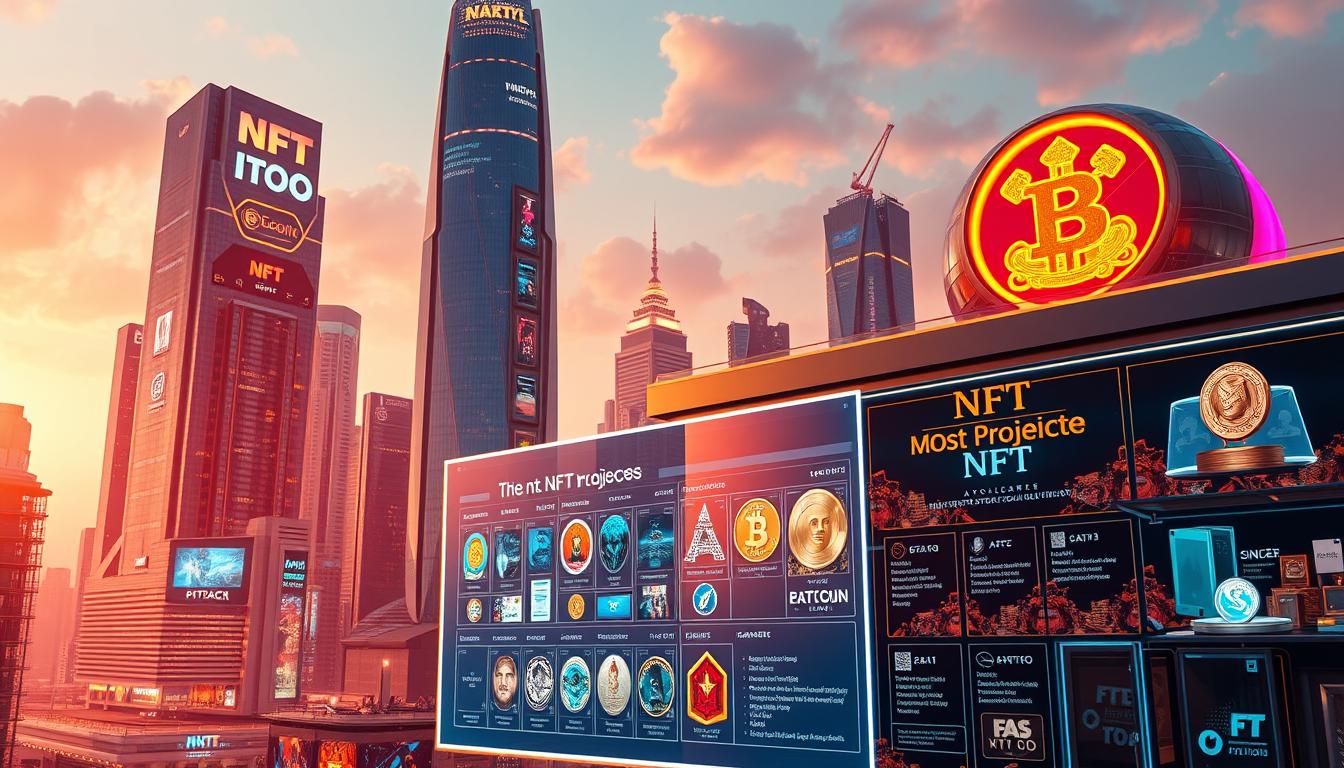
The digital collectibles space continues evolving at breakneck speed, creating new opportunities for strategic buyers. Over $10 billion in trading volume flowed through these markets last year alone, proving their staying power despite fluctuating crypto prices.
Seven standout projects dominate conversations among savvy traders: Bored Ape Yacht Club, Pudgy Penguins, and CryptoPunks consistently lead in sales metrics. Emerging platforms like NFT art investment platforms now provide structured frameworks for evaluating growth potential.
Successful participation requires understanding key indicators beyond hype. Community strength, celebrity adoption patterns, and roadmap execution separate temporary fads from sustainable assets. Projects like Azuki demonstrate how cultural relevance can drive multi-year value retention.
Key Takeaways
- Digital collectible markets show billion-dollar annual trading activity
- Top projects combine artistic appeal with strong community foundations
- Sales volume and celebrity endorsements indicate market momentum
- Platforms exist to streamline evaluation of growth potential
- Long-term viability requires analyzing development roadmaps
- Market volatility demands strategic entry/exit timing
Understanding the NFT Market Landscape
The digital ownership revolution thrives on real-time data and network effects. Platforms like NFT Price Floor simplify analysis by tracking floor prices, sales activity, and ownership patterns across major marketplaces. This data-driven approach reveals hidden opportunities in fast-moving markets.
Market Trends and Key Metrics

Floor prices act as market thermometers. When combined with trading volume spikes, they signal growing demand. Collections with rising unique holder counts often show stronger community engagement – a key predictor of longevity.
Three metrics dominate investor dashboards:
- 7-day volume changes highlight momentum shifts
- Market cap comparisons reveal undervalued assets
- Holder distribution charts expose whale influence risks
The Role of Blockchain and Trading Volume
Ethereum remains the heavyweight champion, but Solana’s low fees attract budget-conscious traders. Bitcoin Ordinals bring new collectors into the space through familiar infrastructure. Each chain creates unique market dynamics.
High trading volume collections offer better liquidity. This allows quicker transactions without drastic price impacts. However, volume spikes without roadmap progress often lead to temporary pumps rather than sustainable growth.
The Rapid Growth of Digital Collectibles
Digital ownership has reshaped creative industries in unprecedented ways. Beeple’s $69 million sale of “Everydays” in 2021 became a cultural landmark, proving digital art could rival physical masterpieces in value. This watershed moment accelerated the shift from casual collecting to strategic asset acquisition.
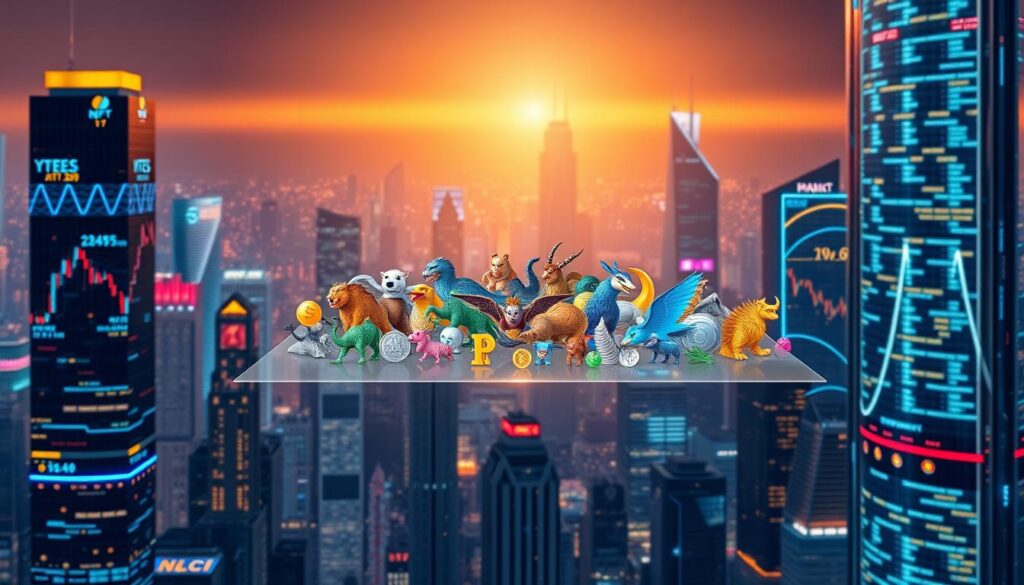
Evolution From Creative Expression to Financial Strategy
Early digital art focused on visual appeal and online community building. Today’s collectibles serve multiple purposes – from virtual land deeds to gaming items with real-world utility. Investors now evaluate these assets using tools like liquidity ratios and historical performance charts.
Blockchain upgrades have been crucial to this transformation. Faster transactions and lower fees allow broader participation, while smart contracts enable features like automatic royalty payments. These technical improvements create tangible value beyond aesthetic appreciation.
| Feature | Traditional Art | Digital Collectibles |
|---|---|---|
| Ownership Proof | Paper Certificates | Blockchain Records |
| Transfer Process | Weeks/Months | Minutes |
| Royalty Structures | Rare | Programmable |
| Market Accessibility | Limited | Global 24/7 |
Mainstream adoption continues to surge as brands launch exclusive digital items. A sports franchise might issue limited-edition highlight reels, while musicians release unlockable concert footage. These hybrid assets blend artistic merit with practical benefits.
The market’s expansion creates new portfolio diversification options. Unlike stocks or bonds, digital collectibles often gain value through cultural relevance and community engagement. This unique combination attracts both art enthusiasts and financial strategists.
most profitable NFT collections to invest in
Established projects continue setting benchmarks in the blockchain space. Seven standout digital assets dominate trading charts, blending artistic innovation with measurable utility. These pioneers demonstrate how strategic design and community focus create lasting value.
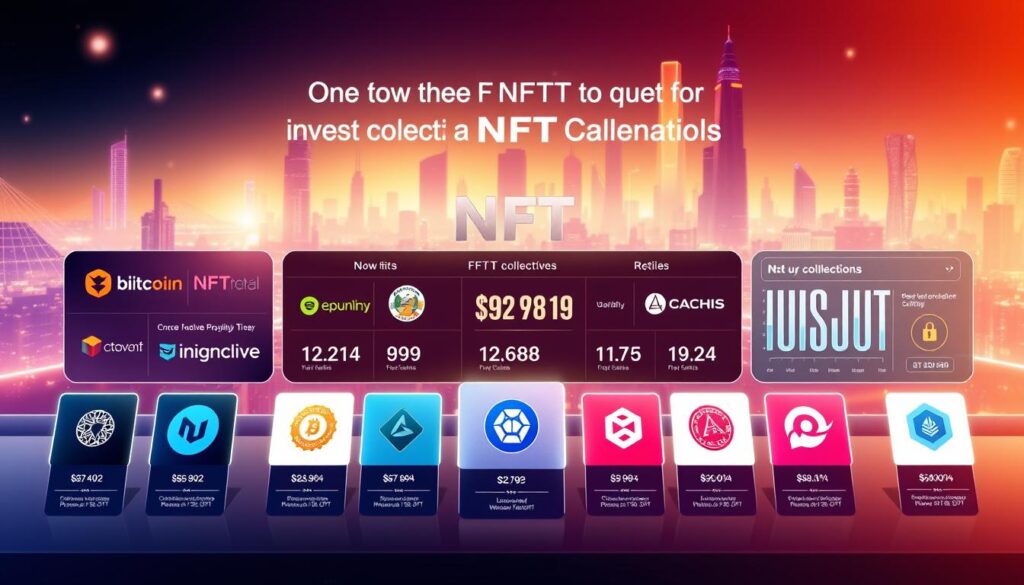
Overview of Leading Collections
Bored Ape Yacht Club remains a cultural touchstone, offering membership perks like exclusive events. Pudgy Penguins combines approachable designs with multi-chain accessibility, appealing to new entrants. CryptoPunks maintains historical significance, while Azuki’s anime-inspired artwork fuels passionate fan engagement.
Emerging options like Sorare merge fantasy sports with verifiable ownership. Solana Monkey Business and NodeMonkes showcase opportunities beyond Ethereum. Each project targets specific niches, from gaming integrations to cross-platform compatibility.
Factors Driving Their Profitability
Community strength separates temporary trends from enduring assets. Active Discord servers and real-world meetups signal healthy ecosystems. Projects with roadmap milestones like virtual land development or brand partnerships often see sustained interest.
Utility features play equally vital roles. Access to merchandise drops, voting rights, and royalty-sharing models keep holders invested. Collections balancing scarcity with functionality typically maintain stable floor prices despite market fluctuations.
Recent data shows assets with clear use cases outperform purely speculative ones. As blockchain technology evolves, these market leaders adapt through upgrades like improved interoperability and enhanced security protocols.
Spotlight on Iconic NFT Collections
![]()
Blockchain-based art has produced cultural landmarks that blend digital innovation with real-world influence. Two projects exemplify this phenomenon through distinct strategies and measurable impact.
Bored Ape Yacht Club and Its Spin-Offs
Yuga Labs’ flagship nft collection redefined digital ownership by merging art with exclusive membership perks. Holders gain commercial rights to their apes, enabling merchandise lines and brand partnerships. Adidas and Rolling Stone have leveraged these assets, while celebrity owners amplify visibility through social media.
The ecosystem expanded through strategic spin-offs like Mutant Ape Yacht Club, creating layered investment opportunities. With 5,469 unique holders and $4 billion in sales, the project maintains relevance through live events and intellectual property development.
Pudgy Penguins and Community Impact
This family-friendly collection demonstrates how grassroots engagement drives success. Selling 8,888 units in 19 minutes, the project built momentum through collaborative storytelling and holder governance. Recent LayerZero integration enables cross-chain functionality, expanding utility beyond initial expectations.
Community initiatives range from charity fundraisers to interactive world-building exercises. These efforts create lasting value that transcends speculative trading, with $1.1 billion in total sales validating the approach.
Trending NFT Projects on Multiple Blockchains
Blockchain technology has diversified the digital collectibles market across multiple networks. Each platform offers distinct features that shape trading dynamics and community engagement. Savvy collectors now balance opportunities between established ecosystems and emerging alternatives.
Comparing Ethereum, Solana, and Bitcoin Ordinals
Three major platforms dominate blockchain-based digital assets. Ethereum remains the go-to choice for complex smart contracts and established marketplaces. Solana attracts budget-conscious traders with near-instant transactions. Bitcoin Ordinals brings innovation to the original cryptocurrency’s network.
| Feature | Ethereum (ETH) | Solana | Bitcoin Ordinals |
|---|---|---|---|
| Avg. Transaction Fee | $5-$50 | $0.01-$0.25 | $1-$15 |
| Transaction Speed | 2-5 minutes | 10+ minutes | |
| Notable Project | Bored Ape Yacht Club | Solana Monkey Business | NodeMonkes |
| Unique Advantage | Established ecosystem | Low-cost trading | Bitcoin security |
Solana Monkey Business exemplifies blockchain innovation with its DAO structure. Holders govern the project through MonkeDAO, deciding on partnerships and treasury allocations. The collection’s 21 SOL floor price makes entry accessible compared to ETH-based alternatives.
Bitcoin Ordinals projects like NodeMonkes showcase new possibilities. A rare piece sold for 17 BTC ($1M+) after attracting high-profile buyers. These assets leverage Bitcoin’s unmatched security while enabling creative expression through ordinal inscriptions.
Cross-chain tools are becoming essential as traders diversify holdings. Platforms now offer unified dashboards for managing assets across networks. For those exploring multi-chain trading strategies, understanding each blockchain’s strengths is crucial.
How Market Data Informs NFT Investments
Smart investors leverage real-time metrics to navigate digital asset markets effectively. Three core indicators shape strategic decisions: floor price patterns, trading activity levels, and market capitalization trends.
Understanding Baseline Value and Activity
The floor price acts as a collection’s entry point, reflecting immediate buyer demand. Sudden drops or spikes often signal shifting supply dynamics. Trading volume measures liquidity strength—consistent activity suggests stable entry/exit opportunities.
Valuation Through Supply Calculations
Market cap formulas multiply floor price by total assets, creating comparable benchmarks. Projects with steady pricing often outperform volatile alternatives long-term. Tools like NFT Price Floor track these metrics alongside historical charts, highlighting optimal trade windows.
Seasoned traders cross-reference these datasets with community growth metrics. This approach separates temporary hype from assets with fundamental value retention potential.


